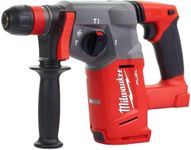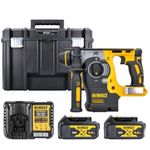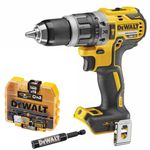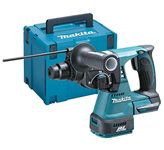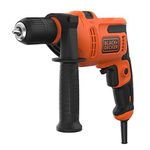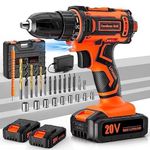10 bestCordless Hammer Drillsof December 2025
112M consumers helped this year.
15% off
1
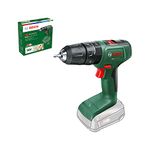
Bosch Cordless Combi Drill EasyImpact 18V-40 (1 battery, 18 Volt System, in carrying case)
Bosch

9.8
26% off
2
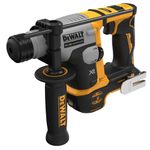
DEWALT DCH172N-XJ 18V XR Brushless Compact 16mm SDS Plus Hammer Drill - Bare Unit
DEWALT

9.6
3
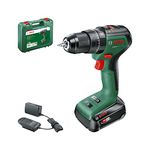
Bosch Cordless Combi Drill UniversalImpact 18V-60 (1 Battery 2.0 Ah, 18 Volt System, in Carrying case)
Bosch

9.4
28% off
4

BLACK+DECKER 18V Hammer Drill with Battery, Charger, and Kitbox, BCD700S1K-GB
BLACK+DECKER

9.2
27% off
5
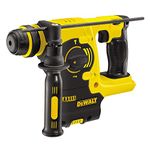
DEWALT DCH253N-XJ SDS Plus Body Only Rotary Hammer Drill, 18V XR Lithium-Ion
DEWALT

9.0
OtherUp to 14% off
6
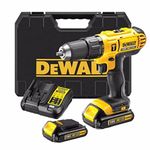
DEWALT GG107 18V Combi Drill X2 Upgraded 1.5AH Batteries Fast Charger,Latest T STAK CASE*Complete KIT,Black
DeWalt

8.8
26% off
7
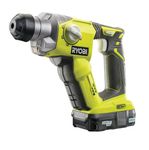
Ryobi R18SDS-0 18V ONE+ Cordless 4-Mode SDS+ Drill (Battery & Charger Excluded)
RYOBI

8.5
8
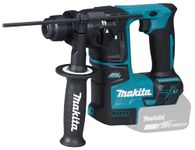
Makita DHR171Z 18V Li-Ion LXT Brushless Rotary Hammer - Batteries And Charger Not Included
Makita

8.3
17% off
9
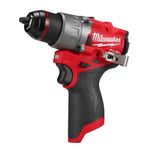
Milwaukee 1/2" Drill Driver - 12V Fuel - 3403-20 Without Battery and Without Charger
Milwaukee

8.0
10
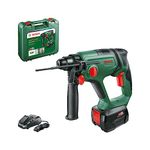
Bosch Cordless Rotary Hammer Drill UniversalHammer 18V (1x Battery 2.5 Ah, 18 Volt System; Drilling/Hammer Drilling/Chiselling; 2.0 J Impact Energy, SDS Plus Tool Holder, in Carrying Case)
Bosch Home and Garden

7.8
A Guide to Selecting the Best Cordless Hammer Drills
Choosing the right cordless hammer drill can make a significant difference in your DIY projects or professional work. A cordless hammer drill combines the convenience of a cordless drill with the power of a hammering action, making it ideal for drilling into hard materials like concrete and masonry. To find the best fit for your needs, consider the following key specifications and understand how they impact performance and usability.
Battery Voltage
Battery voltage determines the power of the cordless hammer drill. Higher voltage batteries (18V or 20V) provide more power and are suitable for heavy-duty tasks, while lower voltage batteries (12V) are lighter and better for light-duty tasks. Choose a higher voltage if you need to drill into tough materials frequently, and a lower voltage for occasional use or lighter materials.
Battery Capacity (Ah)
Battery capacity, measured in ampere-hours (Ah), indicates how long the battery will last on a single charge. Higher Ah batteries (4Ah or more) offer longer runtime, which is crucial for extended projects. Lower Ah batteries (2Ah or less) are lighter and may be sufficient for shorter tasks. Consider your typical project duration to decide the right capacity.
Hammering Rate (BPM)
Hammering rate, measured in beats per minute (BPM), shows how many times the hammer action occurs per minute. Higher BPM (over 30,000) means faster drilling into hard materials. Lower BPM (under 20,000) is adequate for softer materials. If you often work with concrete or masonry, opt for a higher BPM.
Max Drilling Capacity
Max drilling capacity indicates the maximum diameter of holes the drill can make in different materials. This is usually specified for wood, metal, and masonry. Larger capacities are better for heavy-duty tasks, while smaller capacities are suitable for lighter work. Match the capacity to the types of materials and hole sizes you typically need.
Speed Settings
Speed settings refer to the number of different speeds the drill can operate at. Multiple speed settings allow for greater control and versatility, enabling you to adjust the speed based on the material and task. If you need precision and flexibility, look for drills with multiple speed settings.
Chuck Size
Chuck size determines the maximum diameter of drill bits the drill can hold. Common sizes are 1/2 inch and 3/8 inch. Larger chucks (1/2 inch) can accommodate bigger bits, which is useful for heavy-duty drilling. Smaller chucks (3/8 inch) are lighter and suitable for general-purpose use. Choose based on the bit sizes you frequently use.
Weight
Weight affects the ease of handling and fatigue during use. Heavier drills are more stable and powerful but can be tiring to use for extended periods. Lighter drills are easier to maneuver and better for overhead or prolonged tasks. Consider your strength and the nature of your projects when choosing the weight.
Ergonomics
Ergonomics refers to the design and comfort of the drill. Features like a comfortable grip, balanced weight distribution, and easy-to-use controls can make a big difference in usability. If you plan to use the drill frequently or for long periods, prioritize ergonomic designs to reduce strain and improve efficiency.
Best Reviews Guide Newsletter
Get exclusive articles, recommendations, shopping tips, and sales alerts
Sign up for our newsletter to receive weekly recommendations about seasonal and trendy products
Thank you for subscribing!
By submitting your email address you agree to our Terms and Conditions and Privacy Policy
